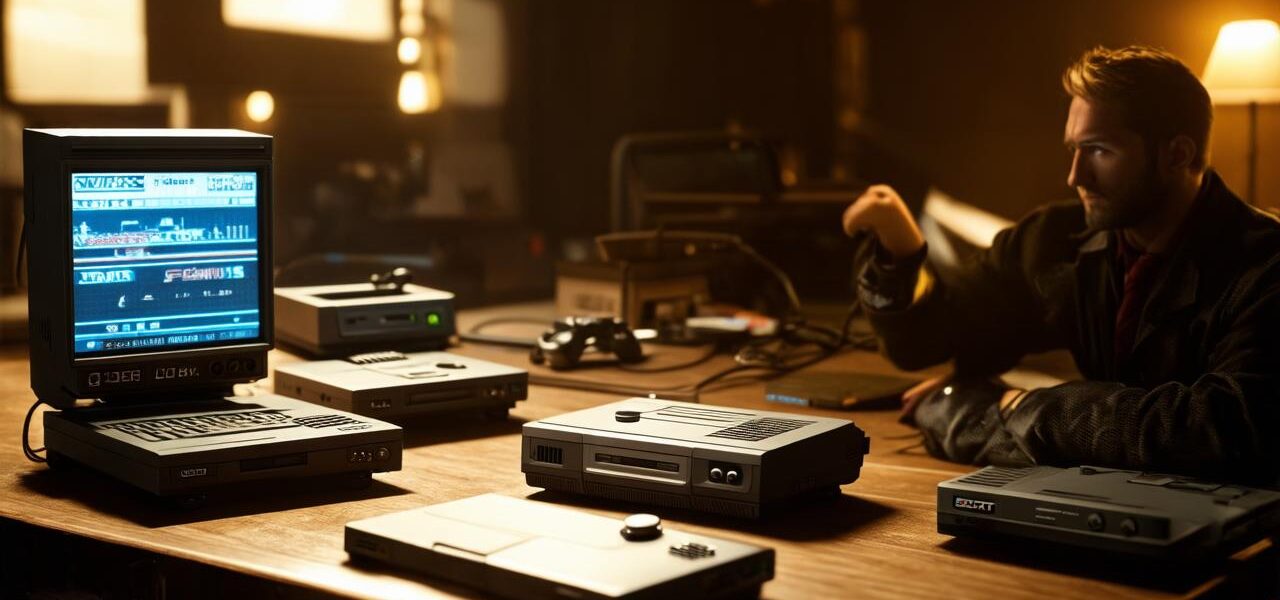The first video game console: The Magnavox Odyssey (1972)
The journey of video game consoles began in 1972 with the Magnavox Odyssey. This was the first commercially successful home video game console, and it paved the way for the future of gaming.
At its core, the Magnavox Odyssey was a simple black box that connected to a television set via composite cables. It came with two controllers and could be used to play 14 different games, including Pong, which later became an iconic arcade game.
The console sold for $295, and it was considered a major success considering the time.
The Magnavox Odyssey’s impact on the gaming industry cannot be overstated. It demonstrated that video games could be played at home and sparked the development of more advanced consoles.
The Atari 2600 (1977)
Following the success of the Magnavox Odyssey, the Atari 2600 was released in 1977. This console revolutionized gaming by introducing ROM cartridges that allowed players to download and play games directly from a cartridge.
This made it much easier for consumers to access new games and eliminated the need for a separate game library.
The Intellivision (1976)
Another pioneering console was the Intellivision, which was released in 1976. The Intellivision was designed by Tomohiro Nishikado, who is credited with creating the first video game with a 40×24 character display and color graphics.
The Intellivision also introduced the use of a joystick as a controller, which quickly became popular among gamers. The console was more expensive than the Magnavox Odyssey and Atari 2600, but it offered improved graphics and sound quality.

The Nintendo Entertainment System (NES) (1985)
In 1985, Nintendo released the Nintendo Entertainment System (NES), also known as the Famicom in Japan. The NES was a major success, selling over 60 million units worldwide. It introduced several iconic games such as Super Mario Bros., The Legend of Zelda, and Metroid.
The NES was also the first console to feature a built-in Game Pak system, which allowed players to download and play games directly from a cartridge. This made it much easier for consumers to access new games and eliminated the need for a separate game library.
The Sega Genesis (1989)
In 1989, Sega released the Genesis console. The Genesis was a major success, selling over 50 million units worldwide. It introduced several iconic games such as Sonic the Hedgehog, Street Fighter II, and Altered Beast.
The Genesis was also the first console to feature a built-in CD-ROM drive, which allowed players to access games directly from CDs. This made it much easier for consumers to access new games and eliminated the need for a separate game library.
The PlayStation (1994)
In 1994, Sony released the PlayStation console. The PlayStation was a major success, selling over 70 million units worldwide. It introduced several iconic games such as Final Fantasy VII, Tomb Raider, and Metal Gear Solid.
The PlayStation was also the first console to feature a built-in CD-ROM drive, which allowed players to access games directly from CDs. This made it much easier for consumers to access new games and eliminated the need for a separate game library.
The Nintendo 64 (1996)
In 1996, Nintendo released the Nintendo 64 console. The Nintendo 64 was a major success, selling over 20 million units worldwide. It introduced several iconic games such as Super Mario 64, The Legend of Zelda: Ocarina of Time, and GoldenEye 007.
The Nintendo 64 was also the first console to feature a built-in cartridge reader that used proprietary 64-bit technology. This made it much easier for consumers to access new games and eliminated the need for a separate game library.
The PlayStation 2 (1998)
In 1998, Sony released the PlayStation 2 console. The PlayStation 2 was a major success




